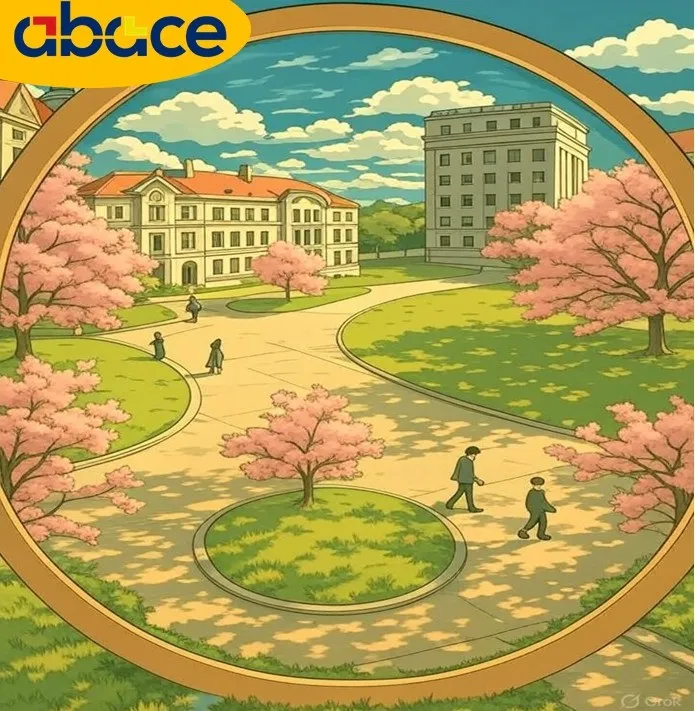In recent years, many individuals have been seeking to study at prestigious universities, with engineering being a highly sought-after field. Gaining admission to top-tier universities in one’s home country is challenging due to limited student intake. Therefore, for greater convenience, many turn to universities in other countries. Some individuals passionately pursue their interests, enabling them to study at renowned global universities with significant prestige. However, many of these individuals prefer pursuing higher education in European countries, one of which is Romania. By studying in Romania, you can even obtain permanent residency in the country. This article focuses on studying engineering in Romania.

Study engineering in Romania online
Studying engineering in Romania is the main topic of this article. The migration of engineering students to Romania is not a significant trend. A quantitative study began with a questionnaire and data collection, relying on five major technical universities in Romania: the University of Bucharest and the Technical University of Civil Engineering Bucharest play key roles in engineering education in Romania. Other universities include the Technical University of Cluj-Napoca, the Gheorghe Asachi Technical University of Iași, and the Politehnica University of Timișoara. Each official name corresponds to formal designations used in tables and figures. The research was conducted from November 2019 to February 2020 with support. The academic leadership of these universities, informed of the study’s purpose, granted access to their students. A team of three researchers visited the universities.
In collaboration with student associations, educational groups, and teachers, researchers distributed questionnaires during lectures, seminars, or lab classes. Links to an online questionnaire and detailed instructions for completing responses were also shared. Studying engineering in Romania does not typically occur through online learning platforms. The study covered five universities, but the response rate for online media was low. The on-site presence of the research team ensured higher-quality responses, which is a crucial factor.
Recommended article: Studying Dentistry in Romania

Engineering, a long-standing profession in Romania
It is said that “Romanians are born poets,” and indeed they are. However, it can also be said that “Romanians are born engineers.” Romanians are often recognized for their constructive, innovative, and inventive qualities, traits that are familiar to Iranians as well. The construction of grand churches, beautiful monasteries, and wooden structures clearly demonstrates the engineering ingenuity of Romanians. These structures, even after centuries, retain their vibrant colors on the exterior. Walls, battered by rain, snow, and wind, remain undamaged. The suveica (weaving shuttle), war looms, potter’s wheels, water and windmills, and musical instruments are all creations of Romanians, representing just a few examples of engineering craftsmanship over time.
These examples highlight the deep-rooted history of engineering in Romania. Therefore, studying engineering in Romania can be highly rewarding, as engineering runs in the blood of Romanians. The Apollodorus Bridge in Damascus, built by a Romanian, is one of the oldest bridges. Studying engineering in Romania is particularly noteworthy. Human flight without catapults or other external devices, using a heavier-than-air machine, is another significant invention.
Recommended article: Studying medicine in Romania
Residency status after studying engineering in Romania
In Romania, the proportion of graduates in science, technology, engineering, and mathematics (STEM) exceeds the European Union average. However, evidence suggests that due to low participation in higher education, outcomes are not as expected. There are 14.4 STEM graduates per 1,000 people aged 20–29, compared to the EU average of 19.1, as shown in the EU Education Monitor. Skill shortages in the labor market have increased due to fewer new graduates in science and engineering and knowledge-based economic migration.

The EU’s regional goals depend on four pillars, with human capital being a critical component. A country’s development relies not only on an economic and institutional framework but also on a knowledgeable population capable of creating and applying global knowledge and adapting skills. Studying engineering in Romania can meet local needs while contributing to new knowledge production. Innovation and infrastructure depend on a robust and renewable human capital pool, with engineers playing a significant role. Thus, the employment situation for engineers in Romania is favorable, suggesting good prospects for residency after studying engineering.
Romania, a long-standing member of the European Union

Extensive research on engineering education trends in Romania highlights that engineering students generally have a high intention to migrate, perceiving job opportunities and conditions in Romania as unfavorable compared to those in “older EU member states.” EU cohesion measures aim to ensure suitable, well-paying jobs across member states to reduce migration within the EU. However, inequalities persist, and the younger generation is eager to find quick solutions to their aspirations. The research provides a detailed profile of students, their migration destinations, and insights into the migration of skilled youth, identifying economic factors as the primary driver for engineering students’ migration. 63.6% of respondents cited low wages in Romania compared to advanced Western countries as the top factor, with better working conditions abroad being the second most cited reason.
Recommended article: Romania for life
Required documents to study engineering in Romania

To study engineering in Romania, certain preparations are necessary, including gathering required documents. For international students who are not citizens of EU, EEA, or Switzerland, the following documents are needed for admission to Romanian universities: a completed application form, a certified copy of a high school diploma or equivalent for undergraduate studies, and a certified copy of a graduation certificate for master’s or PhD applicants. Additionally, certified copies of academic records translated into Romanian, English, or French, a certified copy of a birth certificate, a medical certificate confirming the absence of contagious or other diseases, and a certified copy of a passport are required.
A letter of no objection from the applicant’s home university, a language proficiency certificate (except for applicants from countries where the official language is the one used in their chosen program), two recent photos, and a motivation letter are also necessary
Engineering employment in Romania
Labor costs significantly impact GDP. In 2015, per capita labor costs in Romania were 30% higher than in Bulgaria. Comparing Romania to other European countries in terms of development facilities and GDP per capita helps assess its labor market within the EU. Using the latest data, hourly labor costs in Romania, measured in euros, are compared to the EU average, not adjusted for purchasing power parity. From an investor’s perspective operating locally and accounting in euros, optimizing raw material use and technology affects labor productivity. Environmental pollution is a concern in studying engineering in Romania, not only due to waste from production but also from technology-related environmental investments. Romania’s GDP per capita is less than one-third of the EU average, providing deep insight into the country’s context, which is essential for living there.

Studying engineering at the University of Bucharest

The University of Bucharest is a modern public research university and one of the most prestigious in Romania and the region. Established in 1864, it is the second-oldest higher education institution in Romania. It offers undergraduate and master’s programs in social sciences, humanities, physical and life sciences, education, psychology, law, computer science, business, and economics. Doctoral studies have a long tradition at the University of Bucharest, with the first PhD awarded in 1905. Since then, over 10,000 doctoral degrees have been granted. As of 2019, the university is part of a European civic university network. The Technical University of Civil Engineering Bucharest was established in 1948.
The Carol Davila University of Medicine and Pharmacy in Bucharest is one of the largest and oldest academic centers in healthcare. It comprises four faculties: Medicine, Dentistry, Pharmacy, and Midwifery and Nursing. Programs are offered in Romanian and English. If engineering in Romania does not interest you, these fields offer good prospects.
Recommended article: Cost of living in Romania

Conclusion
Studying engineering in Romania is highly rewarding, as outlined throughout the article. Unlike conventional approaches, this article examines engineering education in Romania from a deep and fundamental perspective, enabling you to pursue engineering studies in Romania with a broader outlook.


